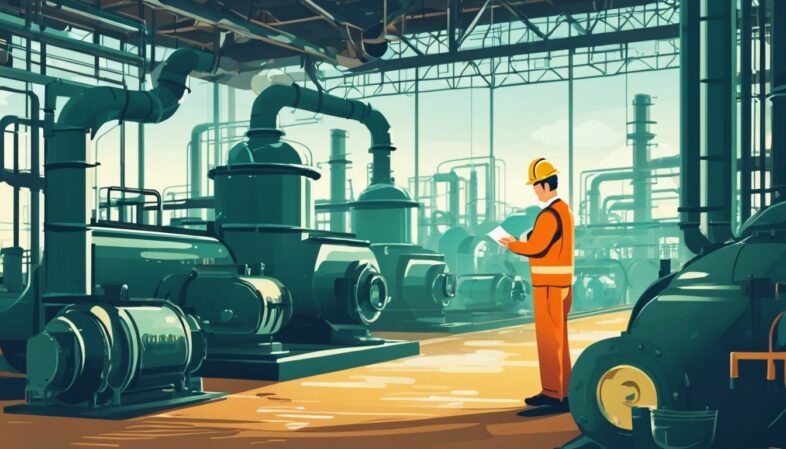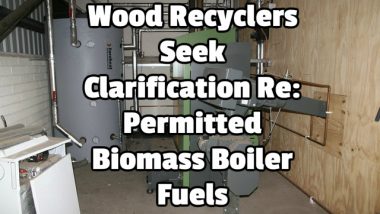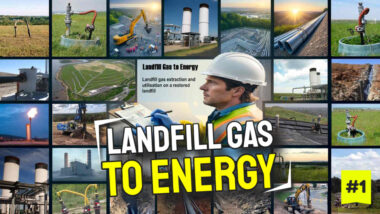Have you ever wondered where everything goes once you flush the toilet? It's a question that piques the curiosity of many, yet remains shrouded in mystery for most. Every day, countless litres of waste and water swirl away from our sight, embarking on an unseen journey.
Interestingly, when we press that flush button, the waste doesn't just disappear—it travels through a complex system designed to protect both our health and the environment.
One fascinating fact is that this wastewater eventually makes its way to a treatment plant. Here, it undergoes several processes to remove contaminants before being released back into nature or reused.
This blog post will unravel the intricate path of waste—from your toilet flush through sewers and treatment plants—to showcase how advanced systems manage what we dispose of daily.
Whether it’s yesterday’s dinner or just regular toilet paper,, understanding this process sheds light on modern sanitation marvels and why being mindful about what we flush matters.
Ready to dive deeper? Let's explore together!
Key Takeaways
- The waste and water from your toilet travel through pipes to a treatment plant where they get cleaned before returning to nature.
- Items like wet wipes should not be flushed as they can clog pipes and harm marine life.
- Sewage treatment plants play a key role in removing harmful substances from our water, protecting both our health and the environment.
What Happens When You Flush The Toilet?
When you flush the toilet, the water and waste flow through the trap system and into the main drain. The sewage then moves through the sewerage system to a treatment plant.

Flushing Process
As soon as you flush the toilet, waste, water, and toilet paper start their journey down a pipe known as the sewer. This system ensures that everything flushed moves away from your home swiftly.
The waste then heads towards a municipal wastewater treatment plant. Here, it will go through various stages of cleaning and processing.
The sewage system plays a crucial role in this movement, using gravity and pump stations to get the waste from homes to the treatment facility. It's impressive how this infrastructure works around the clock, managing what we send down the drain.
At every stage, from flushing to reaching the sewage treatment plants designed for handling such loads, there’s an intricate dance of engineering ensuring our environment stays clean and healthy.
Trap System
The trap system plays a crucial role in your toilet. It's designed to keep sewage gases from coming back up into your house. Every time you flush, water pushes the waste through a curved pipe beneath the toilet.
This curve holds water at all times, blocking odours and gases.
After passing through this bend, waste moves towards the main drain. The journey doesn't stop there – it heads straight for bigger sewer lines under the streets. From there, our next stop is where everything flows to the main drain, ready for a bigger journey ahead.
Flow to Main Drain
After flushing, your waste doesn't just disappear—it begins a critical journey. It heads down the pipes in your house, joining forces with waste from other homes. Together, they travel through the neighbourhood's sewer lines.
This network is like the city's underground arteries, guiding all that water and waste to one place: the main drain.
This main drain isn’t just any pipe; it’s a major tunnel where everything from your home meets with wastewater from across town. Here, gravity plays its part, pulling the flow towards the sewage treatment plant.
Think of it as a bustling hub where our daily wastes gather before getting cleaned up. Next stop? The sewage treatment process—where magic happens to turn our waste into something better for the environment.
The Sewage Treatment Process

The sewage treatment process starts with screening and filtering out large objects and debris. Then, gas is released, sludge is removed, heat treatment occurs, followed by disinfection before releasing the water.

Screening and Filtering
At the sewage treatment plant, waste water first goes through screening and filtering. This process removes large items like rubbish, wet wipes, and other materials that shouldn't be there.
Screens catch big pieces while filters take care of smaller bits. It's a crucial step to protect the equipment that comes next in the cleaning journey.
Filters also play a part in getting rid of dirt and organic material. They work like a sieve—letting water pass but trapping solid particles. This makes sure only the stuff that can be safely processed or broken down moves forward.
It’s all about getting the wastewater ready for more detailed treatment later on.
Gas Release
After the screening and filtering stage, our sewage treatment journey takes an interesting turn. The process now deals with gas release, particularly methane, carbon dioxide, and sometimes even ammonia.
These gases are by-products of the breakdown of organic material in wastewater by bacteria. Think of it as nature's way of recycling waste back into the ecosystem.
Methane produced during this phase is not just any gas; it's actually quite powerful and can be used as fuel to heat facilities or generate electricity. This shows how treating wastewater isn't only about cleaning water but also about harnessing energy from waste.
Bacteria play a vital role here, breaking down sewage in an anaerobic environment—that means without oxygen—and transforming waste into usable energy along with other compounds like nitrogen.
It's a win-win for both the environment and energy resources!
Removal of Sludge
Following the release of gas during sewage treatment, attention turns to sludge removal. This dense substance is what remains after water separates from the mixture of human waste, toilet paper, and other materials flushed down our toilets.
Special equipment called digesters breaks this sludge down further. They use bacteria to decompose the material, turning it into biosolids. These can be safely disposed of in landfills or sometimes used as fertiliser for certain types of crops.
Sludge removal is a crucial step in the sewage treatment process that ensures harmful substances are not released into our environment. It demonstrates a complex balance between protecting our natural resources and finding sustainable ways to manage waste.
The resulting biosolids serve as potent reminders of how treated sewage plays an important role in environmental conservation and agriculture.
Heat Treatment
Heat treatment plays a crucial role in the sewage treatment process. It involves using high temperatures to eliminate harmful bacteria and pathogens from the sludge that remains after primary and secondary treatments.
This step ensures that the waste is safe for disposal or possible use as biosolids in agriculture.
Employing heat also helps reduce the volume of sludge, making it easier and more economical to handle. The process contributes significantly to minimising environmental impact by turning waste into energy or recyclable material, showcasing an innovative approach towards sustainable waste management.
Disinfection and Release
At the sewage treatment plant, after removing sludge and heat treatment, chlorine is used to disinfect the water. This process removes any remaining harmful bacteria before releasing the treated water back into the environment.
The release of this clean water ensures that our rivers and oceans are not contaminated, safeguarding ecosystems and public health. It's a crucial step in the waste management journey that protects our natural resources.
The sewage treatment process ends with the safe release of disinfected water into rivers or oceans. This final stage assures that treated wastewater doesn't harm aquatic life or human health when it re-enters nature.
Harmful Effects of Flushing Inappropriate Items
Flushing wet wipes can clog sewer systems and harm marine life. Contaminants in waterways from flushing inappropriate items can lead to pollution and environmental damage.

Wet Wipes
Wet wipes are not flushable despite what the packaging may claim. When flushed, they do not disintegrate like toilet paper.. Instead, they can clog pipes and cause blockages in the sewage system.
This leads to costly repairs and potential harm to the environment.. As a responsible citizen, it's crucial to dispose of wet wipes in the bin instead of flushing them down the toilet, preventing unnecessary damage to both your plumbing and the sewage system.
The improper disposal of wet wipes contributes to water pollution.. These non-biodegradable materials end up in rivers or oceans, harming aquatic life and ecosystems. The next time you reach for a wet wipe, remember that disposing of it correctly plays a pivotal role in protecting our environment from contamination..
Contamination of Waterways
Contamination of waterways occurs when harmful substances from sewage, such as chemicals and bacteria, seep into rivers, lakes, and oceans. This can harm aquatic life and make the water unsafe for drinking or recreational activities.
It's crucial to prevent the flushing of inappropriate items like wet wipes and chemicals to safeguard our water sources. Sewage treatment plants play a vital role in removing contaminants before releasing treated water back into the environment, but everyone must be mindful of what goes down the drain to protect our precious waterways from pollution.
Sewage entering water bodies affects their ecosystems by introducing unwanted nutrients that lead to algal blooms and oxygen depletion, harming fish and other aquatic organisms. Efforts are being made worldwide to raise awareness about proper waste disposal methods and promote sustainable practices that minimise contamination of our valuable water resources.
Conclusion
In summary, the journey of waste through the sewage system is a crucial aspect of waste management. Practical and efficient processes at treatment plants ensure that contaminants are removed from our wastewater.
It's vital to understand the impact of flushing inappropriate items like wet wipes, which can lead to blockages and costly repairs. By educating ourselves and others about proper waste disposal, we contribute to cleaner waterways and a healthier environment for all.
Remember – every flush counts in preserving our planet's precious resources!
FAQs
1. Where does all the waste go after we flush it down the toilet?
Once you flush, the waste travels through your home's pipes into the larger sewage system. From there, it ends up at a water treatment plant. At the plant, it goes through primary treatment to remove solids and then more processes like filtration and biological filters before being safely released back into rivers or used as recycled water.
2. What exactly happens to poop at these water treatment plants?
First off, when poop arrives at a water treatment plant, it undergoes several cleaning stages. Initial steps include primary treatment where solids are separated from liquids. Then comes the activated sludge process—this is where bacteria break down harmful substances in water. Finally, after being filtered and treated further, clean effluent is discharged back into nature or reused.
3. Can anything from our toilets be reused? How does that work?
Yes indeed! After wastewater undergoes extensive cleaning—including primary treatments like removing large bits, then filtering through biological filters—it can get transformed into recycled water. This kind of water becomes safe for things like watering gardens or even for industrial use—just not drinking!
4. Is every home connected to these big sewage systems?
Not always! Some homes use septic systems instead of connecting to communal sewer lines. These are individual tanks buried near a house that filter and release wastewater slowly back into the ground nearby.
5. What role do natural wetlands have in treating sewage?
Interestingly enough, some treated wastewater gets directed towards wetlands—a clever move by engineers! Wetlands act like nature’s own purification system; they use plants and soils to filter out remaining impurities from treated sewage water before it re-enters our lakes or rivers…pretty neat solution if you ask me!





